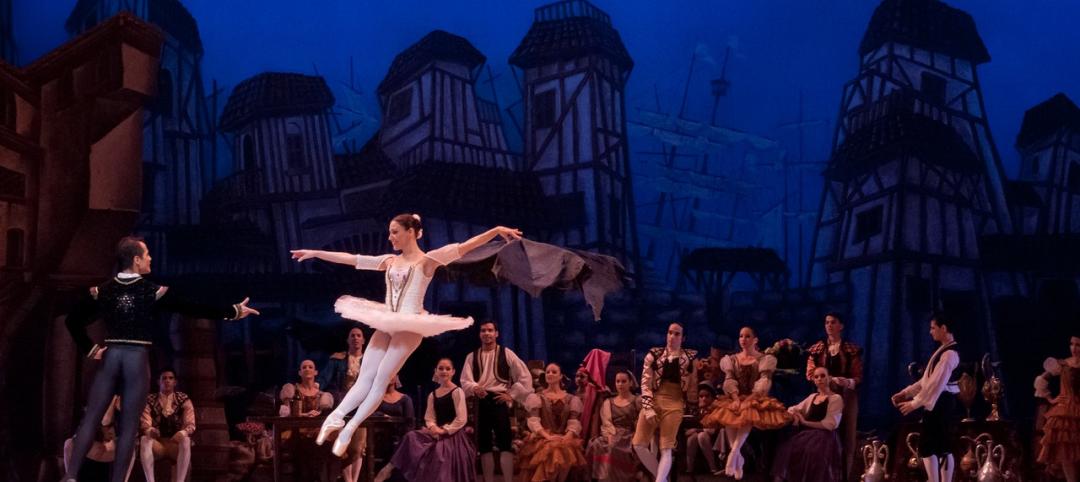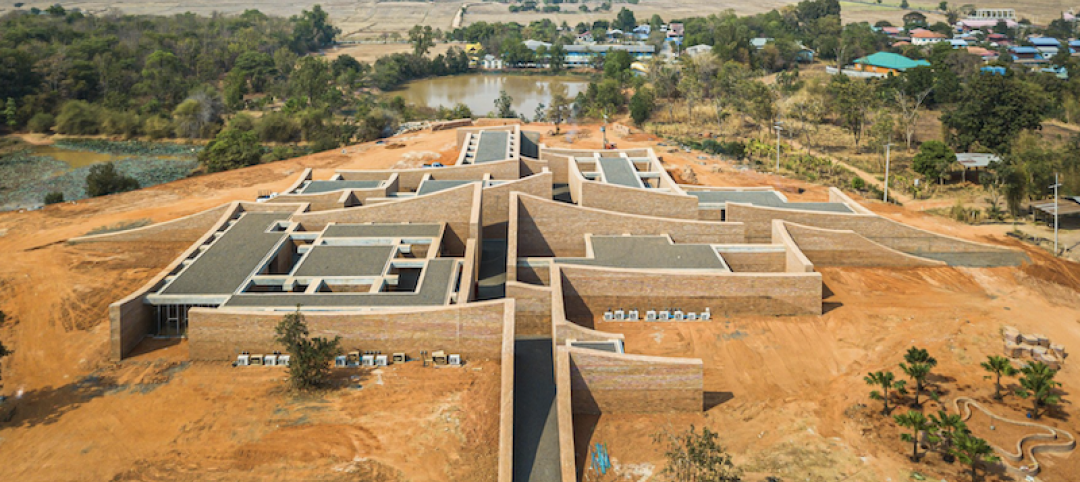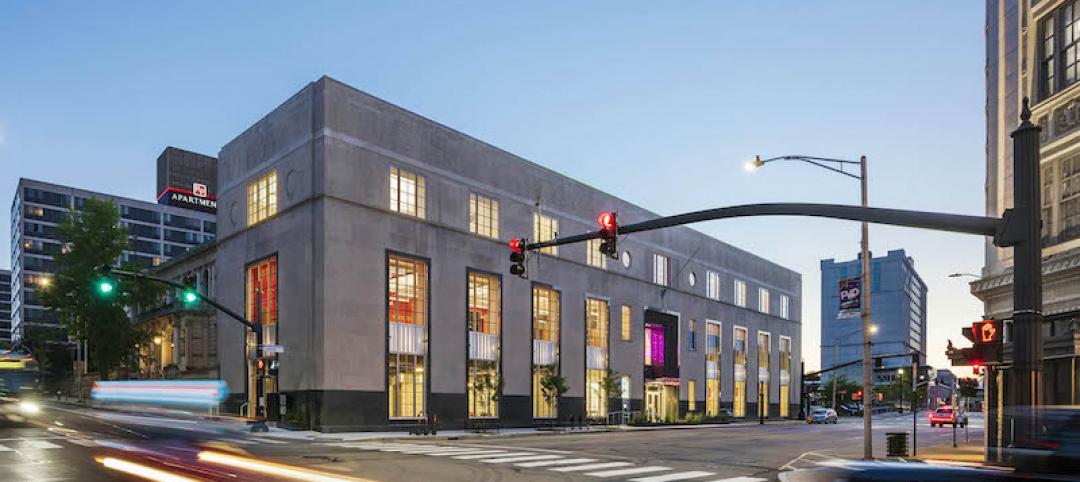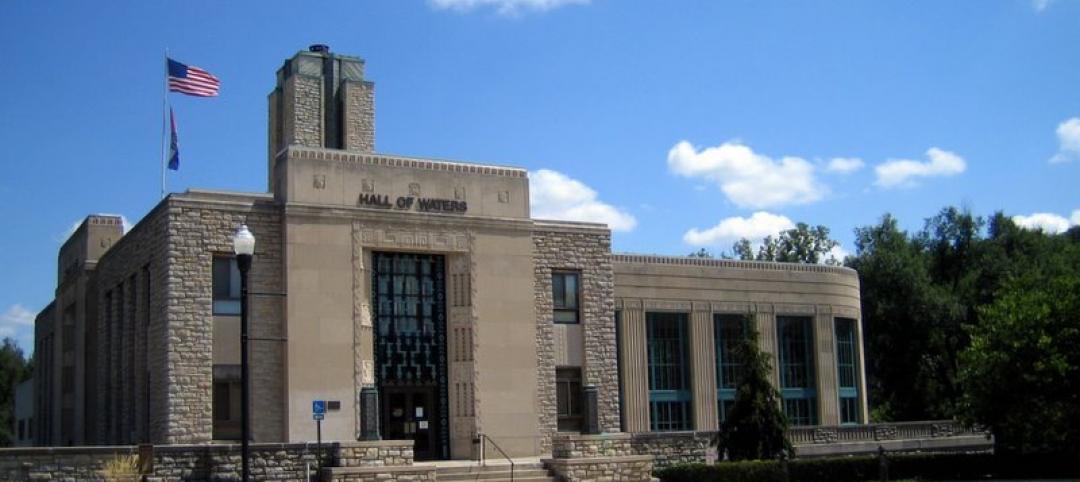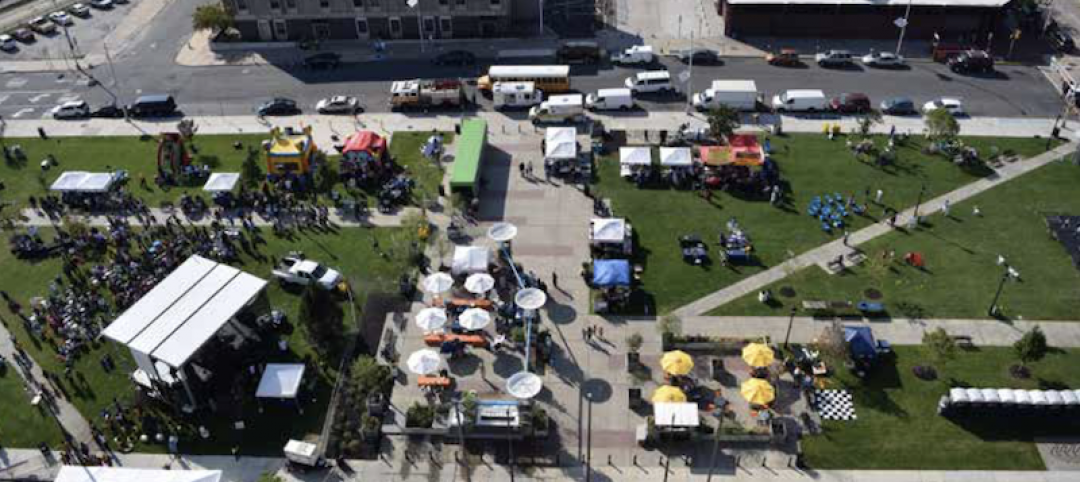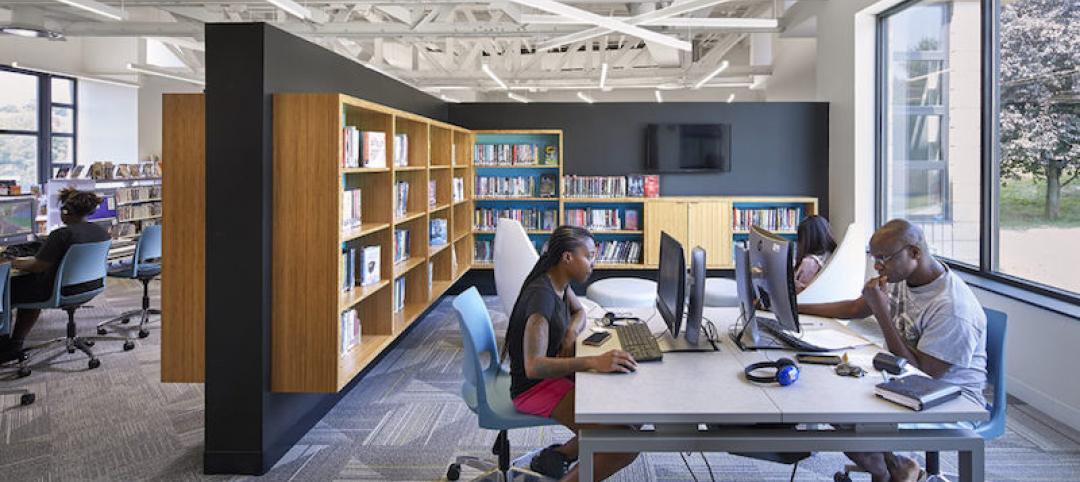 |
|
Design for the Holocaust and Human Rights Center of Maine is representative of a flower in bloom, complete with petals that shelter the circular exhibit space. The center connects to the Bennett Katz Library. Photos: Shepley Bullfinch |
The Holocaust and Human Rights Center of Maine was founded in 1985, but the organization didn't have a permanent home until May 2008. That's when the Michael Klahr Center, which houses the HHRC, opened on the Augusta campus of the University of Maine.
The design, by Boston-based architects Shepley Bulfinch Richardson & Abbott, was selected from among more than 200 entries in a university-sponsored competition. The winning project, a conceptualized flower in bloom, was created by a group of young architects at Shepley Bulfinch who imagined four petal-like forms growing out of the ground—symbolic of the seeds of democracy and freedom.
“There are still so many human rights issues out there today, so the flower blossoms are representative of new life coming back when conditions are right,” says Angela Watson, a principal at Shepley Bulfinch and mentor to the young architects.
 |
|
The Building Team utilized BIM to check the demands and capabilities of the petal forms and determine the proper petal radii, which cut the cost of bending the shell steel by half. The finished petals are clad in copper. |
It was Watson who introduced the HHRC project to the firm. When she learned of the University of Maine's design competition back in 2004, she organized a separate in-house competition as a way to give the firm's young bloods a chance to “flex their design muscles,” as she put it. The entire firm voted, and the two winning designs were entered in the HHRC competition, with one taking the prize.
At 6,300 sf, the Michael Klahr Center isn't a large building. The space is apportioned throughout a single level that includes a circular exhibit space in the center as well as offices and education space. However, its sculptural forms were complex enough for the Building Team, which included structural engineer Simpson Gumpertz and Heger of Waltham, Mass., to experiment with BIM.
Not a big deal now, but BIM was fairly new in 2004 when design began, turning this project into a BIM pilot for Shepley Bulfinch. The Building Team used BIM to explore many different construction options, including cast-in-place concrete, glulam wood beams, and steel. They found that cast-in-place would push the project over the $1.8 million budget cap and glulam would make the petals too thick. Their BIM model helped them decide that steel framework was the most efficient and economical solution.
Steel construction enabled some portions of the building to be shop fabricated, which saved time. General contractor Wright-Ryan Construction, Portland, Maine, cut construction time even more by framing large portions of the small building using wide-flange noncomposite steel beams and columns, with the lateral load system consisting of structural steel concentrically braced frames with hollow structural section (HSS) brace members.
But it was the complex design of the steel petals that really tested the Building Team's mettle.
The SGH structural engineering team developed an innovative structural system that consisted of a grid of HSS sections using curved HSS 8x8s as the ribs along the meridians of the spherical sections of the petals and straight HSS 4x4s along the parallels of latitude of the pedals. The HSS grids, braced and moment-connected in-plane, allowed the petals to act as shells. Three-inch-diameter structural steel columns pierced the petals and provided additional structural support. The BIM model enabled the team to check the demands and capabilities of the petals and determine the proper petal radii, which cut the cost of bending the shell steel by half.
Wood-framed box beams (made of 2x4s and plywood) were incorporated into the spans between the rib framing; this allowed the four petals to be sheathed in plywood, over which the standing seam copper roof panels were installed.
“This building is the perfect story,” says Watson. “It's a unique design from a young, talented team that overcame challenges of budget, schedule, and material and created a place that will have lasting impact.”
Related Stories
Market Data | Feb 24, 2021
2021 won’t be a growth year for construction spending, says latest JLL forecast
Predicts second-half improvement toward normalization next year.
Giants 400 | Dec 16, 2020
Download a PDF of all 2020 Giants 400 Rankings
This 70-page PDF features AEC firm rankings across 51 building sectors, disciplines, and specialty services.
Giants 400 | Dec 3, 2020
2020 Cultural Facilities Giants: Top architecture, engineering, and construction firms in the U.S. cultural facilities sector
AECOM, Arup, and Populous head BD+C's rankings of the nation's largest cultural facilities sector architecture, engineering, and construction firms, as reported in the 2020 Giants 400 Report.
Government Buildings | Nov 13, 2020
Tax shortfalls nip government projects in the bud
Federal contracts are proceeding, but states and cities are delaying, deferring, and looking for private investment.
Cultural Facilities | Oct 13, 2020
Thailand’s Elephant Museum reinforces the bond between humans and beasts
The complex, in Surin Province, was built with 480,000 clay bricks.
Libraries | Sep 25, 2020
Major renovation to Providence’s downtown library is completed
The $29 million project adds light and collaborative space to a 67-year-old wing.
Cultural Facilities | Sep 24, 2020
America's 11 most endangered historic places - 2020 list
Annually, this list spotlights important examples of our nation’s architectural and cultural heritage that, without applied action and immediate advocacy, will be destroyed or face irreparable damage.
Giants 400 | Aug 28, 2020
2020 Giants 400 Report: Ranking the nation's largest architecture, engineering, and construction firms
The 2020 Giants 400 Report features more than 130 rankings across 25 building sectors and specialty categories.
Cultural Facilities | Jun 19, 2020
A new ULI report chronicles the depaving of America
Fifteen examples of how parks and green spaces emerged from parking lots, garages, and underpasses.
Libraries | Jan 23, 2020
Information or community center: The next generation of libraries must be both
Are libraries still relevant in a digital world?




